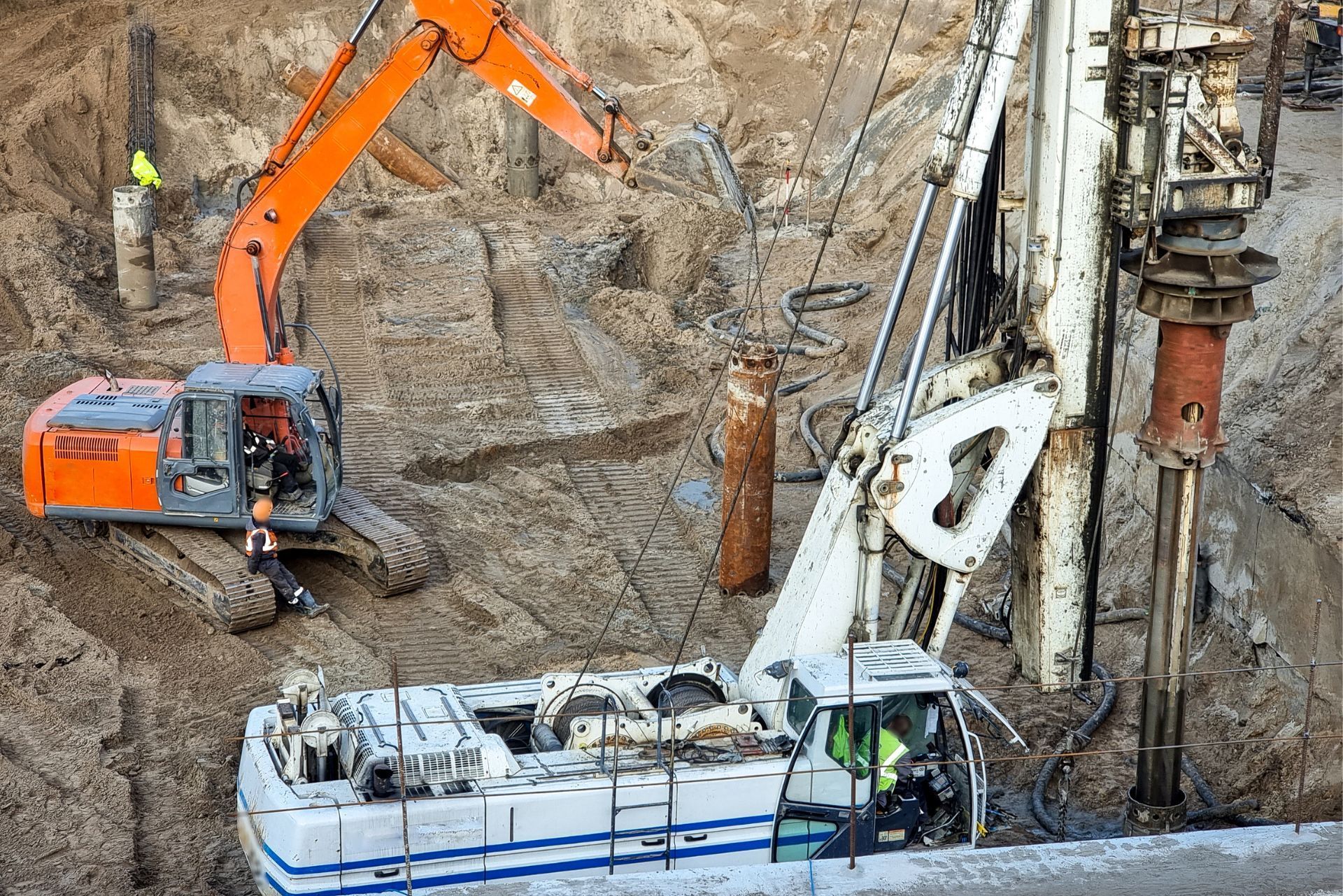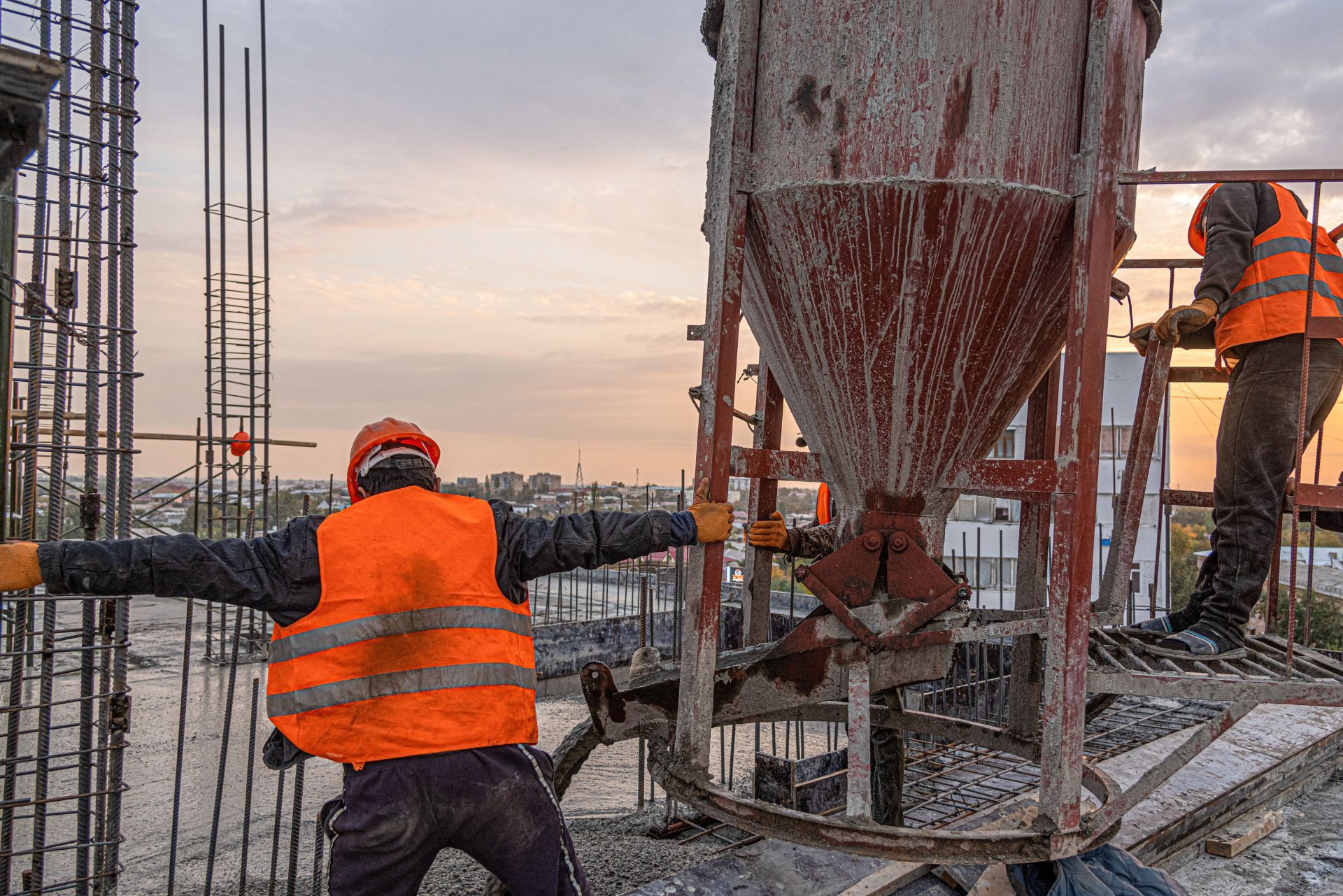Top 3 Recommended Policies

The well casing and cementing industry plays a critical role in the oil and gas sector, ensuring the structural integrity of wells and preventing contamination of underground resources. With the market expected to grow from $11.67 billion in 2024 to $12.38 billion in 2025, at a compound annual growth rate (CAGR) of 6.1%, businesses in this field face both exciting opportunities and significant risks. Navigating these risks effectively requires a comprehensive understanding of the insurance landscape tailored specifically to casing and cementing operations.
In this article, we explore the essentials of business insurance for casing and cementing companies, covering market trends, risk factors, regulatory influences, and technological advancements shaping the insurance sector. Whether you are a business owner, risk manager, or industry professional, this guide will equip you with the knowledge to protect your operations and thrive in a competitive market.
For those interested in the broader construction insurance market dynamics, recent reports highlight a projected global market size reaching $18.9 billion by 2025, growing annually at 6.9%. This growth reflects increasing demand across construction-related industries, including well casing and cementing services, driven by regulatory requirements and evolving risk profiles. (coinlaw.io)
Understanding the Risks in Casing & Cementing Operations
Casing and cementing work involves complex procedures that expose businesses to a variety of risks. These include equipment failure, environmental hazards, worker injuries, and operational delays. The nature of the industry—with its reliance on heavy machinery and the handling of hazardous materials—makes it particularly vulnerable to accidents and costly liabilities.
Environmental risks are especially significant. Improper cementing can lead to leaks or contamination of groundwater, resulting in regulatory fines and remediation costs. Additionally, natural catastrophes such as hurricanes or earthquakes can severely disrupt operations and damage infrastructure. In 2023 alone, global insured losses from natural catastrophes reached an estimated $123 billion, marking the fourth consecutive year with losses exceeding $100 million. This trend underscores the importance of robust insurance coverage to mitigate financial exposure. (contractormag.com)
The financial implications of these risks extend beyond immediate costs. Companies may face long-term reputational damage if they are involved in environmental incidents, leading to a loss of trust from stakeholders and clients. Furthermore, the regulatory landscape is becoming increasingly stringent, with governments imposing heavier penalties for non-compliance. This evolving environment necessitates continuous training and education for employees to ensure they are aware of best practices and the latest regulations, which can further strain operational resources.
Key Insurance Coverages for Casing & Cementing Businesses
Given these risks, several types of insurance are essential for casing and cementing companies:
- General Liability Insurance: Protects against third-party claims of bodily injury or property damage.
- Professional Liability Insurance: Covers errors or omissions in the technical aspects of casing and cementing services.
- Environmental Liability Insurance: Addresses pollution and contamination risks specific to the oil and gas sector.
- Workers’ Compensation: Provides coverage for employee injuries sustained on the job.
- Equipment and Property Insurance: Covers damage or loss to critical machinery and facilities.
- Cyber Insurance: Increasingly important as the industry adopts digital technologies, protecting against cyber threats like ransomware and supply chain breaches.
Notably, cyber insurance adoption in the construction-related sectors has surged by 26% in 2025, reflecting heightened awareness of digital vulnerabilities. (coinlaw.io)
In addition to these coverages, businesses must also consider investing in risk management strategies that include regular maintenance of equipment, comprehensive safety training programs for employees, and the implementation of advanced monitoring technologies. These proactive measures not only help in minimizing risks but also can lead to lower insurance premiums over time. Insurers often reward companies that demonstrate a commitment to safety and risk mitigation with better rates and terms, creating a win-win situation for both parties.

Market Trends Impacting Insurance for Casing & Cementing
The insurance market for construction and related industries, including casing and cementing, is currently experiencing notable shifts. While the overall market is growing, there are signs of softening in certain segments due to increased competition among insurers. This competition has led to premium reductions in some areas, offering potential cost savings for businesses that maintain strong risk management practices.
However, this softening does not mean reduced risk. Instead, insurers are becoming more selective and data-driven in their underwriting, leveraging advanced technologies to assess risk more accurately. The use of artificial intelligence (AI) and machine learning tools enables insurers to predict potential hazards and tailor policies accordingly, improving coverage efficiency and cost-effectiveness. (verifiedmarketreports.com)
Additionally, regulatory requirements continue to drive demand for specialized insurance products. Many regions mandate specific insurance coverages for construction projects, including well casing and cementing operations, to ensure safety and environmental compliance. Staying abreast of these regulations is vital for maintaining eligibility for contracts and avoiding costly penalties. (insights150.com)
Moreover, the increasing focus on sustainability and environmental impact is shaping the insurance landscape. Insurers are now more inclined to offer incentives for businesses that adopt eco-friendly practices and technologies. This shift not only reflects a growing awareness of environmental issues but also encourages companies to implement responsible practices, which can lead to lower insurance premiums and enhanced reputational benefits. As a result, businesses engaged in casing and cementing operations are urged to consider sustainable methods, as these can significantly influence their insurance options and overall market competitiveness.
North America’s Role in the Well Cementing Insurance Market
North America holds the largest market share in well cementing services, driven by extensive oil and gas activities and diverse geological formations. This dominance influences insurance trends, as insurers tailor products to address the unique risks of the region, including regulatory scrutiny and environmental considerations.
For businesses operating in North America, understanding local market dynamics and insurance offerings is crucial for securing adequate protection and competitive premiums. The region’s significance also means that innovations in insurance products and risk management often emerge here first, setting standards for global practices. (globenewswire.com)
Furthermore, the interplay between technology and insurance is becoming increasingly pronounced in North America. Companies are now utilizing advanced data analytics to enhance their operational efficiency and safety measures, which in turn can lead to more favorable insurance terms. Insurers are keen to partner with businesses that demonstrate a commitment to innovation and risk mitigation, as these factors can significantly reduce the likelihood of claims. As a result, businesses that invest in technology not only improve their operational capabilities but also position themselves favorably within the insurance market, potentially unlocking new opportunities and advantages.
Leveraging Technology to Optimize Insurance and Risk Management
The integration of technology into both casing and cementing operations and their insurance processes is transforming the industry. Insurers now utilize data analytics, AI, and machine learning to better understand risk profiles and streamline claims processing. This technological shift benefits businesses by enabling more customized insurance policies and faster response times in the event of claims.
On the operational side, companies are adopting digital tools to monitor equipment health, track compliance, and improve safety protocols. These advancements reduce the likelihood of incidents and can positively impact insurance premiums by demonstrating proactive risk management. For instance, real-time monitoring systems can provide alerts for equipment malfunctions before they escalate into costly failures, thus safeguarding both personnel and assets while enhancing overall operational efficiency.
Moreover, as cyber threats grow more sophisticated, technology-driven insurance solutions become indispensable. Cyber insurance policies now often include risk assessment services that help casing and cementing companies identify vulnerabilities and implement safeguards, reducing exposure to costly cyber incidents. This proactive approach not only protects sensitive data but also fosters trust with clients and stakeholders, as companies can demonstrate their commitment to security and resilience in an increasingly digital world.
Preparing Your Business for the Future
To thrive in the evolving landscape of casing and cementing insurance, businesses should:
- Regularly review and update insurance coverage to reflect operational changes and emerging risks.
- Invest in technology that enhances safety, compliance, and risk monitoring.
- Engage with insurers who leverage advanced analytics and offer tailored policy options.
- Stay informed about regulatory developments and market trends to anticipate insurance needs.
- Consider cyber insurance as a critical component of comprehensive risk management.
By adopting these strategies, casing and cementing businesses can secure the protection necessary to navigate uncertainties and capitalize on market growth opportunities. Additionally, fostering a culture of continuous improvement and innovation within the organization can further enhance risk management efforts. Training employees on the latest technologies and best practices not only empowers them but also creates a more resilient workforce capable of adapting to the rapid changes in the industry.
Furthermore, collaboration with technology partners and industry experts can provide valuable insights and resources, enabling businesses to stay ahead of the curve. By leveraging collective knowledge and experience, companies can implement cutting-edge solutions that not only meet current demands but also anticipate future challenges in the ever-evolving landscape of insurance and risk management.

Conclusion: Securing Your Casing & Cementing Business Through Smart Insurance Choices
The casing and cementing sector is poised for continued growth, with the market expanding steadily and North America leading in revenue share. However, this growth comes with complex risks ranging from environmental liabilities to cyber threats and natural disasters. The global construction insurance market, valued at nearly $19 billion by 2025, reflects these evolving challenges and the increasing sophistication of insurance products designed to address them. (coinlaw.io)
Understanding the specific insurance needs of casing and cementing operations—and partnering with insurers who utilize technology and data-driven insights—can provide businesses with the resilience required to succeed. As regulatory demands tighten and market competition intensifies, proactive risk management and comprehensive insurance coverage become indispensable tools for safeguarding assets, personnel, and reputations.
Ultimately, the right insurance strategy not only protects against losses but also enables casing and cementing companies to innovate, expand, and contribute confidently to the vital energy infrastructure worldwide.
Contact Us
Phone
Location
9595 Six Pines Dr, Suite 8210, The Woodlands, TX 77380

